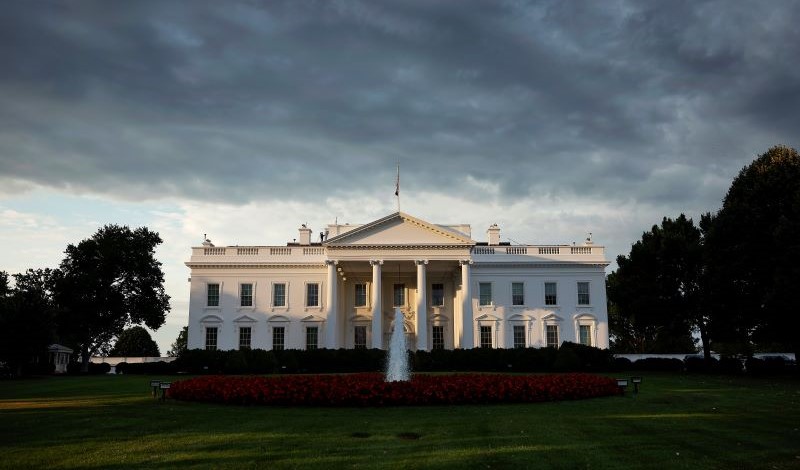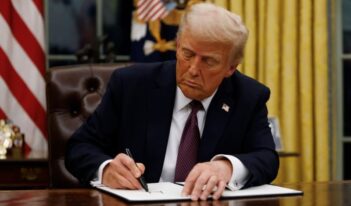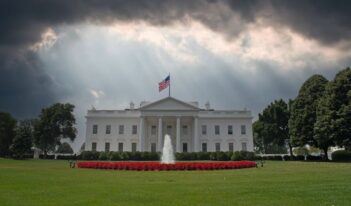
The Trump Administration may defy the lessons that Graham draws from his robust history of regulatory review.
I have a vivid memory of the first time I met John Graham. After the cataclysmic events of September 11, 2001, Washington was plagued by aftershocks. I trudged through a barricaded Pennsylvania Avenue patrolled by soldiers with assault weapons. I was uncertain about the meeting. Wouldn’t Graham have more important things to do? But the man was laser-focused, explaining his agenda for the Office of Information and Regulatory Affairs (OIRA) or, as Public Citizen once described it, “the most powerful agency you’ve never heard of.”
I have spent five decades in Washington following regulatory issues, and the upshot of many frustrations and some great victories is my conclusion that Graham was the most influential leader OIRA ever had. His agenda was based on three premises: Regulatory intervention is only justified when a market failed; benefit-cost analysis is the litmus test for good regulation; and whenever possible, Presidents should deregulate industries to make them more efficient and profitable.
Graham’s opponents, and I was one, objected to his rejection of the precautionary principle reflected in the landmark laws that the U.S. Congress passed in the early 1970s and refreshed in the 1980s and 1990s. We opposed his ambitious efforts to promote benefit-cost analysis and to spur deregulation. By the 2000s, he had powerful supporters—including conservative Republican politicians and industries in the manufacturing sector. Victories came more often on the federal budget front than they did on the regulatory side.
Before joining the Bush Administration in 2001, Graham founded and led the Harvard Center for Risk Analysis for 11 years. He left OIRA in 2006 and entered academia, serving as the dean of the two-campus Indiana University O’Neill School of Public and Environmental Affairs. In 2019, he stepped down as dean but continued on the school’s faculty.
Graham’s new book, Regulatory Reform from Nixon to Biden: Politics, Economics, and Law, is organized into ten chapters that review the regulatory records of the ten Presidents who held office between 1969 and 2024. This organization produces a readable book doing double duty as training in five decades of history for the students Graham identifies as one of his primary audiences.
Graham claims that “in the conventional understanding of regulation, the Congress is the pivotal branch.” This statement is oddly myopic for such a sophisticated participant, especially a conservative one. The story most historians, political scientists, and legal experts tell about the administrative state emphasizes the power of the presidency accelerated by conservative Republican advocates of the unitary executive theory in the Executive Branch and academia.
Graham’s narratives on the six Republican and four Democratic Presidents he covers are clearly written and supported by over 1,400 end notes, significantly more than the typical academic book. Although he discloses his role in the Bush Administration and acknowledges that he may unwittingly display bias, he does a decent job of avoiding the problem. One notable exception is his harshly critical chapter on President Joseph R. Biden, whom Graham describes as “cracking the regulatory whip” in defiance of the guiding principles of benefit-cost analysis and deregulation.
Graham’s critique of President Biden is skewed by Graham’s dismissal of climate change as the most serious existential problem that the human race has ever faced. The world’s credible scientific experts have advised the governments of the world to act very quickly to reduce greenhouse gas emissions or sentence our children and their children to consequences that are difficult to imagine. In his last chapter, Graham presents a list of issues that the regulatory system should make priorities. Climate change is allotted five lines, while subjects such as deregulatory legislation, lookback reviews to eliminate outmoded or inefficient rules, and innovative alternatives to command-and-control regulations consume considerably more space. This lack of emphasis is odd.
Reform from Nixon to Biden also suffers from some notable examples of mission creep. Every time the government instructs its citizens to stop doing something or start doing something else, the decision is, in the broadest sense, “regulatory.” Yet Graham’s discussions of the U.S. Supreme Court’s decision to eliminate the federal right to an abortion or reduce immigration do not advance the reader’s understanding of his core topics, especially benefit-cost analysis, which can seem excessively complex to the uninitiated.
Graham touts deregulation of transportation but does not spend much time explaining its advantages. He dismisses such negative outcomes as the destruction of Boeing’s safety record and recent rail accidents that could have been avoided by better technology or staffing. Whatever the economic advantages of deregulation, the question whether this country can afford to sacrifice safety should be controversial from a political and legal perspective.
Few things are more annoying than book reviews that complain about the omission of subjects whose inclusion would have made a book twice as long. So it is with some embarrassment that I note the absence of much effort to identify and refute arguments against benefit-cost analysis and deregulation. For example, his identification of the loyal opposition to the decisions OIRA made when he presided over it is limited to the public interest organization OMB Watch, which ceased operation in 2016, before the Administrations of President Donald J. Trump and President Biden. The universe of his opponents was richer than this focus. It included the environmental, public health, and consumer advocacy communities and sub-industries disadvantaged by deregulation of larger competitors.
The irony for Graham, his prospective readers, his supporters, his opponents, and future students is that with the advent of President Trump, Elon Musk, and the MAGA movement, the last five decades of regulatory thought seems of borderline relevance. Russell Vought, the new Director of the Office of Management and Budget, speaks instead of populating thousands of civil service jobs with Trump loyalists, putting civil servants “in trauma,” and invoking the Insurrection Act against protesters. Vought also supports infusing Christian nationalist ideas into government. The Trump Administration appears to believe that all of government is the problem. Markets should operate unimpeded. Who knows if and when the more government-friendly analyses offered by Graham will reemerge.
This essay is part of a series, titled “Presidential Legacies of Regulatory Reform.”




